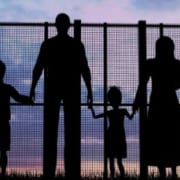USCIS has been delaying the printing of green cards and employment authorization documents that the organization has already promised to individuals. This accompanies a wave of green card and work permit delays related to the U.S.’s response in immigration policy during the COVID-19 pandemic.
It is important to note that USCIS is currently still open, processing applications and accepting new ones. Typically, if USCIS approves a new application, the organization will issue an approval notice and will mail a green card or employment authorization document to the applicant. Historically, USCIS has outsourced the printing of these documents to a third-party company. In June, however, USCIS’s contract with the third-party company expired. Rather than renewing this contract, USCIS decided to handle the printing of these documents internally. Due to USCIS’s current budget crisis, however, the organization has not hired workers to handle this insourced printing, which contributes to the current delay in these documents’ issuance, printing, and delivery.
At the moment, there are 50,000 green cards and 75,000 employment authorization documents that have been promised to immigrants and that have yet to be printed, USCIS disclosed in a statement. Many of these missing green cards are for immigrants who are newly approved for legal permanent residency, although others are for existing permanent residents who are attempting to renew their identity cards. These are essential for lawful permanent residents to have, as these documents demonstrate proof of status in the U.S., which is needed when applying for a job. Without such documents, individuals in the U.S. can face fines or prison sentences.
Overall, green card and work permit issuances are dependent upon the capabilities of the U.S. Citizenship and Immigration Services. Since the COVID-19 pandemic, USCIS has seen a major decrease in immigration application filings. Now, USCIS finds itself in a budget crisis because of the steep decline in applications. USCIS seeks a $1.2 billion bailout from the U.S. Congress, proposing a 10% visa fee surcharge in efforts to repay the loan. If Congress cannot provide these funds before the 3rd of August, USCIS will have to furlough over 13,000 staff members. As a consequence, this will only further delay H-1B processing, green card renewals, and work permits.
These delays come after President Trump’s June 22nd Executive Order, which temporarily suspended the entry of many foreign workers into the United States, pausing the overall issuance of H-1B visas (used by tech companies), H-2B visas (for seasonal employees), J-1 visas (for cultural exchanges), and L-1 visas (for corporate executives). While this excludes hundreds of thousands of individuals from obtaining employment and from uniting with their family members in the United States, the executive order does not impact the status of individuals already in the United States and who have already been promised these green cards or work permits.
The June proclamation heavily restricts immigration, justified by the rationale of strengthening the American economy through American job retention. However, multinational corporations continue to face shortages of skilled professionals in the U.S., according to Yasmin Mirreh in a Bloomberg News article.
The consequential delays that accompany this executive order are frustrating. In many countries, consulates have been closed or are operating during limited hours. Furthermore, once these offices do reopen, priority will likely be given to appointments that were canceled due to the coronavirus pandemic. This puts new applicants waiting for many more months (and possibly years, depending upon the circumstances). In a report last week, the USCIS announced that about 583,420 H-1B visa holders working in the U.S. are stuck in decades-long green card waiting lines due to per country caps.
As immigration policy continues to intersect with the COVID-19 pandemic, USCIS’s budget shortfall, and President Trump’s new executive orders, we are left wondering how – and when – individuals who have been promised green cards or work permits will obtain these documents.











